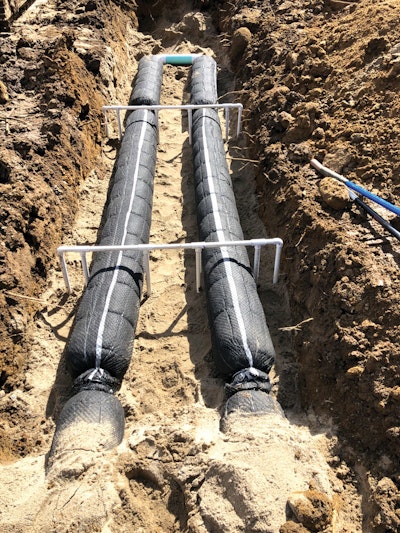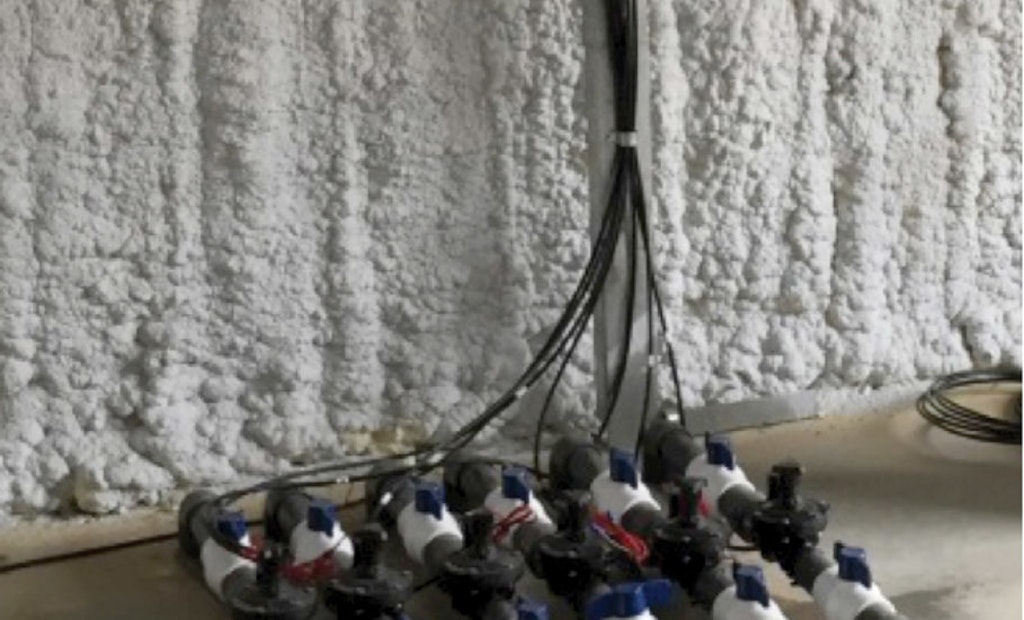Interested in Drainfield Media?
Get Drainfield Media articles, news and videos right in your inbox! Sign up now.
Drainfield Media + Get AlertsDrip disposal system designed for school with limited disposal area
Problem: A school in Missouri had an outdated wastewater treatment system that was not meeting the criteria in a newly issued permit. Design flow was set at 5,000 gpd and the school’s administration needed a solution for an updated treatment system with subsurface disposal that could be worked into the very limited property space.
Solution: Delta Environmental combined an ECOPOD treatment system with a pre-engineered drip disposal system. Using the soils report provided by the contracted soil scientist, Delta was able to design a treatment and drip disposal system that worked within the parameters of the project site, consisting of a disc ring filter, submersible turbine pumps, PLC control management system, electric solenoid valves, water meter, wastewater-grade drip tubing, and all accessories to complete a hydraulically balanced system. The filter rack was used in conjunction with a PLC filter control panel to direct timed releases to multiple zones. It also provides backwash and field flush commands, all programmed to run under unattended, automatic operation.
Result: The six-zone system, with 15 looped laterals per zone, accommodated the permit effluent requirements and still fit within the small area designated for treatment disposal. 800/219-9183;
www.deltaenvironmental.com.
Chambers solve compacted soil challenges for YMCA
Problem: Expansion of the South Mountain YMCA campus in Wernersville, Pennsylvania, included adding cabins, expanding the dining hall, and increasing bathroom facilities from two to 18 toilets. The existing septic system was unable to handle the daily flow increase to 8,500 gpd. The site for a new septic drainfield was the central playing field, however, compaction concerns due to the 300-plus children using the playing field, coupled with typically large rainfall and wet soils in the area complicated the system design.
Solution: Engineer Roger Lehmann of All County & Associates designed a system that includes 12 tanks (a grease trap, seven septic tanks and four pump tanks). The absorption area is divided into two beds, with each dosed by a separate pump to allow for operation and maintenance. Each bed is center-fed with 28 laterals per bed and five 1⁄4-inch holes per lateral. The septic field includes 580 Quick4 standard chambers from Infiltrator with 112 Multiport Endcaps. To provide additional strength to support the weight of the children, the system design specified 12 inches of cover. The depth of installation was unrestricted because the seasonal high groundwater table is 72 inches.
Result: After installing 580 chambers, two beds and 2,408 linear feet of SCH40 PVC pipe in less than six hours, Jim Mack Excavating was impressed with the ease and speed of installation. The engineer was pleased with the strength of the chambers and the product’s ability to handle pressure distribution and allow air movement. 800/221-4436; www.infiltratorwater.com.
Dosing system helps camp meet discharge permit
Problem: With a staff of 75, the Hole in the Wall Gang Camp in Ashford, Connecticut, serves up to 150 seriously ill children at a time. With daily wastewater flows from 20 septic tanks exceeding 10,000 gpd, renewal of their wastewater discharge permit required the camp to install a dosing system capable of delivering approximately 3,000 gallons and increase the number of distribution points to the existing leaching system (2,696 linear feet of 18-inch concrete galleys) from the current one to 17 for a maximum of 150 feet between connection points.
Solution: After discussing a custom Flout design with Jim Richard of Rissy Plastics, the chosen design included two modified 1,500-gallon septic tanks that provided the room necessary for a 17-outlet Flout dosing system with a drawdown of 44 inches. The two tanks were joined together so they fill and drain equally. A 10-outlet Flout and seven-outlet Flout dose at the same time, initiated by a third trigger Flout. Each is equipped with a dose counter that allows the staff to closely monitor daily flow and synchronization.
Result: The dosing tanks and additional distribution piping were approved by the Connecticut Department of Energy and Environmental Protection and installed in 2011. A wireless Monnit monitoring system was installed in 2017. A daily visit is no longer necessary to monitor the system. 877/221-4426; www.flout.net.








